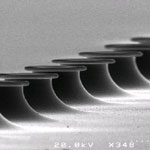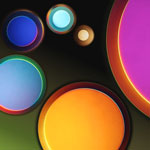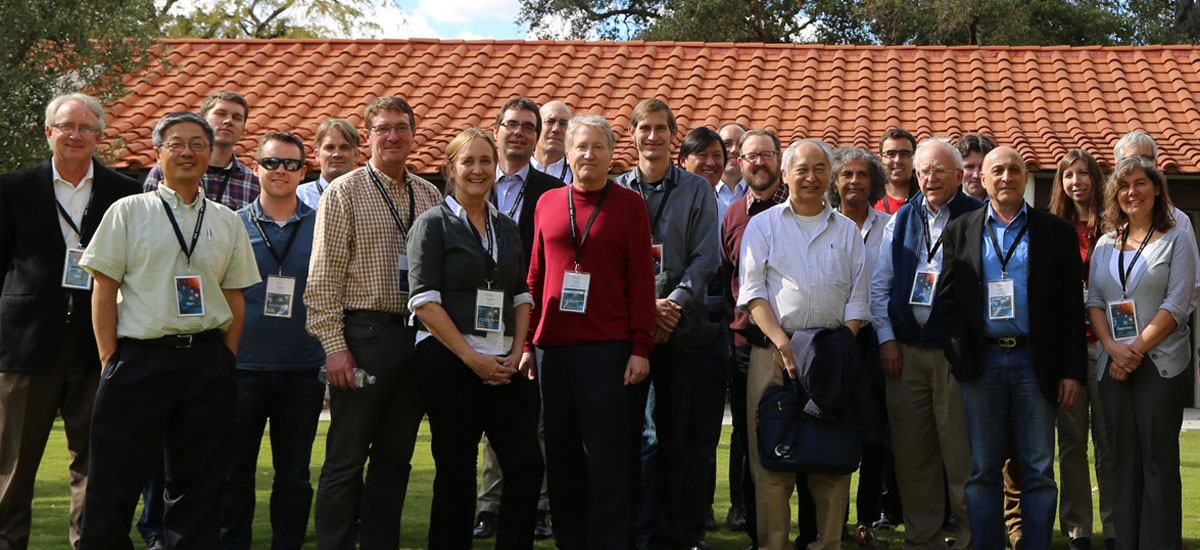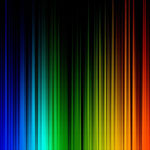Kerry Vahala
The KISS Experience Provides Fresh Insight
Professor Vahala, along with colleagues at Jet Propulsion Laboratory (JPL) and National Institute of Standards and Technologies (NIST), organized a KISS workshop to explore the space applications of optical frequency combs. “The workshop was rooted in the recognition that this was the right moment in time when it made sense to start thinking about applying some of the capabilities that combs provided to space missions.” They identified several gap areas where needed additional expertise and broke into study groups to plan future mission in three distinct areas. The first area was future time standards in space. The second was the search for exoplanets. The third area was to design a planetary imager. To truly tackle these areas, the group worked very efficiently to analyze at least two dozen different ideas before arrive at the three that looked sufficiently important and sufficiently near term to warrant additional work. This would simply be impossible without the kind of structure and environment created by KISS.

Kerry Vahala's current research is focused on a whole range of resonator structures and applications that have been made possible by a new process developed by his team that eliminates the requirement to reflow (melt) the silica to smooth out the dielectric surface. Kerry's team has demonstrated resonators having Q factors of nearly 1 billion. Even more important is that size and shape control are now possible using this design. This has opened up access to a wide range of applications. Also, the seminconductor processing method developed to create these UHQ devices lends itself to a new class of waveguides with record low optical loss.

Kerry Vahala and his team created the highest Q-factor chip-based resonators. Like a tuning fork for light, optical resonators have a characteristic set of frequencies at which it is possible to confine light waves. At these frequencies, optical energy can be efficiently stored for lengths of time characterized by the resonator Q factor, roughly the storage time in cycles of oscillation. In the last ten years there has been remarkable progress in boosting this storage time in micro and millimeter-scale optical resonators. Chip-based devices have attained Q factors of nearly 1 billion and micro-machined crystalline devices have achieved Qs exceeding 100 billion. The long, energy-storage time and small form factor of these ultra-high-Q (UHQ) resonators enable access to an amazingly wide range of nonlinear phenomena and creation of laser devices with remarkable properties. Also, new science results from radiation-pressure coupling of optical and mechanical degrees-of-freedom in the resonators themselves.
"The KISS workshop was one of the most exciting four days collectively that I’ve been involved with in my 30-year career as a researcher. KISS not only brought us together, but also created a protective bubble that allowed us to brainstorm and to quickly identify ideas that make sense. We all felt comfortable and willing to share ideas in party because of the ‘KISS rules’. One rule is to show up on time and if one is late, then they are subject to a firing squad which involves all the participants hurling fuzzy plastic balls at them."
“
The Keck Institute for Space Studies (KISS) and Caltech share a philosophy on how research should be done. This is to bring together a wide range of experts and to lower the barriers for interaction to arrive at new and revolutionary ideas
”
Insight and Impact
"The KISS experience entirely changed the perspective I had on my research and gave me a fresh insight into what others are doing. The opportunity to work with individuals that I’ve never had a chance of collaborating with or even seen at meetings provided a very fresh experience. It also allowed me the chance to have a fresh impact on some ideas that I’d been thinking about."

During the first part of this two-workshop series on Optical Frequency Combs for Space Applications, the participants identified 29 applications and mission concepts where frequency combs might play a critical, enabling role for achieving new science goals. The second workshop, that took place on February 8-11, 2016 focused on some of these applications and explored the performance requirements and technology development needed for both the OFC and, where appropriate, the overall spacecraft and mission design. An emphasis was placed on near-term applications to guide the OFC development path, while still identifying technology development goals for longer-term missions.

Workshop participants suggested 29 applications potentially enabled or significantly enhanced by the use of OFCs. These concepts spanned four general categories in the areas of spectroscopy, fundamental physics, astronomy, and technology. Four specific mission concepts were explored in more depth during the second workshop because of their potential science return. These concepts were 1) a Space-Time Observatory designed around a distributed network of optical clocks for use in gravitational wave detection, Dark Matter experiments, and a worldwide time standard for laboratory science; 2) The Alpha Centauri Reconnaissance Mission to demonstrate OFC technology on a small explorer-class spacecraft to achieve the highest possible Doppler shift measurement precision for radial velocity determination of exoplanetary mass and cosmological expansion, and also serve as a critical pathfinder for either a LUVOIR or HabEx observatory1 ; 3) a Comb Occultation Cubesat Observatory (COCO) for performing CubeSat-scale planetary atmospheric occultation measurements at Earth, Mars, and other solar system targets, thereby enabling fast, broadband, simultaneous measurement of multiple gas species with either active or passive illumination; and 4) Comb-enabled High Angular Resolution Imaging (CHARLI), a ground-based application using OFC-local oscillators for heterodyne detection and interferometry in the mid-infrared to allow imaging of complex scenes in astronomy on scales never imaged before.
Frequency comb technology has continued to advance rapidly in the two years since the end of the second KISS workshop. While it is hard to capture all of the developments in this burgeoning field, it is fair to say that this study marks only the beginning of space applications for optical frequency combs.
“
It is extremely important for Caltech to have a mechanism like KISS that is looking out decades. It takes us out of the time horizon and landscape that we work in from day to day to a much broader one of decades. KISS is a totally unique and vital resource at Caltech.
”
Kerry Vahala